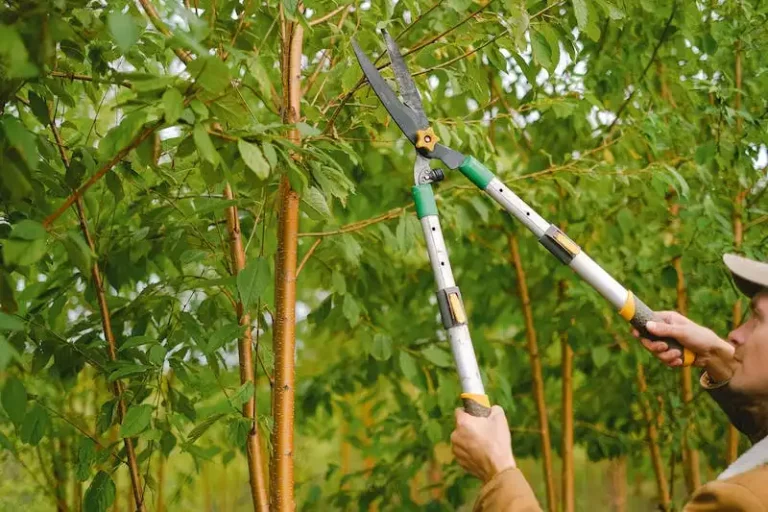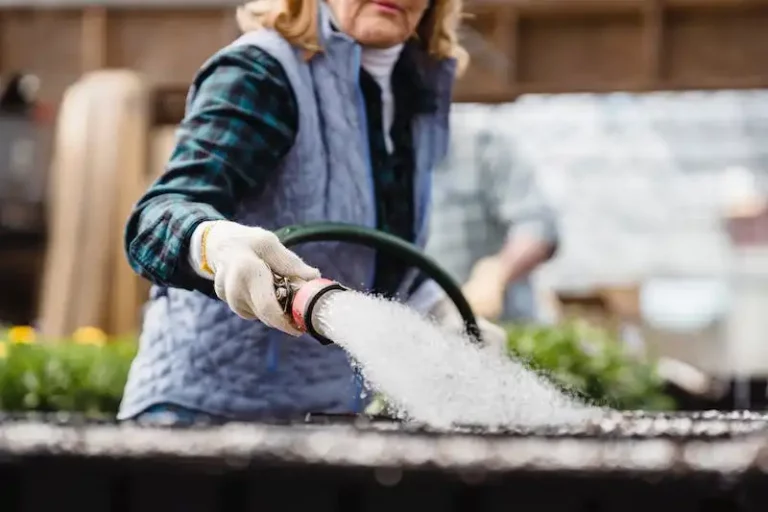If you are looking for a colorful and flowering addition to your garden, consider planting crabapple trees. These small to medium-sized trees are known for their beautiful and vibrant blooms, which range in color from white to maroon. Crabapple trees are easy to grow and can thrive in a variety of climates, making them a popular choice for both residential and commercial landscaping projects.
When choosing a location for your crabapple tree, look for an area with well-drained soil and plenty of sunlight. These trees prefer full sun, but can tolerate some shade. It is also important to plan ahead and make sure you have enough space for the tree to grow. Depending on the variety, crabapple trees can reach heights of up to 20 feet, so be sure to allow for enough room for the tree’s branches to spread out.
Once you have selected the perfect spot, it is time to plant your crabapple tree. Dig a hole that is at least twice as wide as the tree’s rootball and slightly shallower. Place the tree in the hole and backfill with soil, making sure to firm it gently around the base of the tree. Water the tree thoroughly after planting, and apply a layer of mulch around the base to help retain moisture and suppress weeds.
Crabapple trees require minimal care once planted. They are relatively drought-tolerant, but will benefit from regular watering, especially during hot and dry weather. Pruning can be done in late winter or early spring to remove any dead or diseased branches and to promote better air circulation. Fertilizing is generally not necessary, but can be done if desired to encourage healthier growth and more abundant blooms.
With their beautiful flowering and colorful fruit, crabapple trees are not only a beautiful addition to any garden, but also provide food and shelter for birds. These trees attract a variety of wildlife, including butterflies and bees, and provide a source of food during the winter months. The fruit can also be used to make jams and jellies, or left on the tree to provide a natural food source for birds and other wildlife. Overall, crabapple trees are a great choice for adding beauty and interest to your outdoor space.
“Crabapple trees are like a jewel in your garden. Their vibrant and colorful blooms create a stunning sight and attract attention from all who walk by. Whether you plant them along a walkway or in a front corner of your yard, these trees are sure to beautify any space. With their cool and majestic foliage and their orange-red fruit, they are a true showstopper. Plus, their dense growth and sturdy trunk make them a great choice for providing shade and privacy. If you want to create a beautiful and inviting outdoor space, be sure to include a crabapple tree in your design.”
Whether you are a seasoned gardener or a novice, crabapple trees are a great addition to any landscape. They are easy to care for, provide beauty and interest year-round, and attract a variety of wildlife. With their stunning blooms, colorful fruit, and lush foliage, crabapple trees are a true centerpiece in any garden. So, if you are looking to beautify your outdoor space, consider buying a crabapple tree and watch it thrive in all seasons.
Source: https://www.gardeningknowhow.com/ornamental/trees/crabapple/crabapple-tree-care.htm
How to Plant and Grow Crabapple
Planting and growing crabapple trees can add a touch of beauty and color to your landscaping. These low-maintenance trees provide colorful blossoms in the spring and vibrant apples in the fall. Whether you’re a seasoned gardener or just starting out, learning how to plant and grow crabapple trees is a rewarding experience.
When selecting a crabapple tree, choose one that is suited for your climate and growing zone. Consider factors such as the amount of sunlight, temperature, and the acidity of the soil in your area. There are many different varieties available, ranging from smaller shrubs to taller trees.
Once you’ve selected the right tree for your location, it’s time to plant. Start by preparing the soil in the area you’ll be planting. Dig a hole that is two to three times wider than the rootball of the tree. Make sure the hole is deep enough so that the trunk will be level with the surrounding ground.
When planting the tree, position it in the center of the hole and backfill with soil. Be careful not to bury the rootball too deep, as this can cause the roots to suffocate. Water the tree immediately after planting to help settle the soil and provide moisture to the roots.
Crabapples are known for their mottled, oval-shaped apples, which vary in color from maroon to dolgo. These apples are smaller and tarter than regular apples, making them perfect for cooking and storage. They can be used to make jams, jellies, and even apple pie.
To ensure a healthy and thriving crabapple tree, proper care is essential. Regular watering, especially during dry spells, is important. Pruning the tree in late winter or early spring can help shape it and promote better growth. Remove any dead or diseased branches to maintain the overall health of the tree.
In addition to providing beauty and character to your landscape, crabapple trees also attract wildlife. Birds, bees, and other pollinators are drawn to the tree’s blossoms, while the apples provide a source of food for squirrels and other small animals. Birds may also use the tree as a nesting site.
So, if you’re looking to add a touch of beauty and color to your garden, consider planting a crabapple tree. These low-maintenance trees are easy to grow and provide beautiful blossoms and vibrant apples. Choose the right variety for your growing zone and provide the proper care, and you’ll enjoy their beauty and benefits for years to come.
Next time you’re asked about crabapple trees, you’ll be able to provide the answers! Whether it’s about their growth rate, pruning techniques, or the best variety for a specific location, you’ll have the knowledge to help others learn and appreciate these wonderful trees.
So, select a crabapple tree and start planting to experience the beauty and benefits they offer today!
Crabapple Tree Overview
Crabapple trees are a popular choice for gardens due to their stunning fall color, vibrant spring flowers, and year-round visual interest. They attract butterflies and birds, making them a valuable addition to any landscape.
These small to medium-sized trees are often used as shrubs or mottled in groups, with their frequently columnar or spreading shapes adding structure and dimension to the garden.
There are newer varieties available that range in size from dwarf to taller crabapples. You can choose the perfect variety for your garden based on the available space and desired effect.
Crabapple trees are known for their abundant flowers, which bloom in spring. The flowers can range in color from white to pink, and there are even varieties with maroon-colored blossoms.
In addition to their beautiful flowers, crabapple trees also have attractive foliage. The leaves are usually oval-shaped and come in different shades of green. Some varieties even have colorful foliage in the fall.
Crabapple trees are not only visually appealing but can also add value to your property. They are disease-resistant, making them easier to maintain compared to other flowering trees.
When it comes to growing crabapple trees, they prefer full sun or light shade and well-drained soil. You may need to amend the soil with organic matter to improve its quality and drainage.
It is important to note that crabapple fruits can be toxic to dogs, so if you have pets, be careful about the placement of the tree. Additionally, some crabapple varieties drop their fruits which can create a messy garden during the fall.
If you’re looking for a crabapple tree that doesn’t produce fruit, consider the Dolgo crabapple variety. It is a popular choice for its disease resistance, beautiful flowers, and lack of fruit production.
Crabapples are also great for pollination, so if you have other fruit trees in your garden that require cross-pollination, adding a crabapple tree can improve the fruit set and yield.
Growing and caring for a crabapple tree is relatively simple. They generally require regular watering, especially during dry spells. You’ll also want to prune them in the late winter or early spring to maintain their shape and remove any dead or diseased branches.
Overall, crabapple trees are a stunning addition to any garden. With their gorgeous flowers, colorful foliage, and year-round visual interest, they are a true jewel. Whether you’re a seasoned gardener or just starting out, crabapple trees are a great choice and will provide you with a beautiful and vibrant garden.
| Key Features | General Care Tips |
|---|---|
| – Stunning flowers and fall color | – Plant in full sun or light shade |
| – Attracts butterflies and birds | – Amend soil with organic matter |
| – Year-round visual interest | – Regular watering, especially in dry spells |
| – Disease-resistant | – Prune in late winter or early spring |
| – Varieties ranging from dwarf to tall | – Be mindful of toxic fruit for dogs |
Whether you’re looking to enhance your garden design or simply want to enjoy the beauty of crabapple trees, you’ll have a rewarding and enjoyable gardening experience with these stunning trees. Don’t hesitate to reach out if you have any questions about crabapple trees or need further guidance.
Where to Plant Crabapple
Crabapple trees are a popular addition to any garden or landscaping design. They add a touch of beauty with their vibrant flowering and greenery, and also attract many types of pollination. When deciding where to plant your crabapple tree, there are a few key factors to consider.
The first is the amount of sunlight the tree will receive. Crabapples thrive in full sun, so it’s best to choose a location that gets at least 6 hours of direct sunlight per day. However, they can tolerate some shade as well, so if you have a partially shaded area, your crabapple should still do well there.
Next, consider the soil conditions. Crabapples prefer well-drained soil that is slightly acidic. They can tolerate different pH levels, but a soil test can help determine the best fertilization program for your specific tree. It’s important to note that crabapples do not do well in wet or waterlogged soil.
When planting your crabapple tree, make sure to dig a hole that is at least twice the width of the rootball. This will give the roots room to grow and establish themselves. It’s also a good idea to add some compost or potting soil to the hole to help improve the soil conditions.
As for the location of your crabapple tree in your garden or landscape, you have many options. Crabapples can be used as a focal point, planted in the corner of a yard, or used to line a driveway or walkway. You can also plant them near your home or patio to enjoy their beautiful blooms up close.
Crabapples are known for their beautiful flowering, and there are many different varieties to choose from. Some popular options include the “Royal Raindrops” crabapple, which has mottled foliage and deep pink flowers, and the “Sugar Tyme” crabapple, which produces white flowers that last for weeks. There are also newer varieties that have been bred to be disease-resistant and have a longer flowering time.
When it comes to pruning and fertilizing your crabapple tree, there are a few tips to keep in mind. Pruning should be done in early spring before the tree starts to bloom. Remove any dead or diseased branches, as well as any branches that are crossing or rubbing against each other. Fertilization should be done in the spring as well, using a slow-release fertilizer applied according to the package instructions.
Lastly, it’s important to be aware that crabapple trees produce small apples that are not suitable for eating. These apples can be messy if they fall on the ground, so it’s a good idea to either pick them up or consider planting a variety that does not produce fruit.
In conclusion, finding the right spot to plant your crabapple tree is key to its healthy growth and beautiful blooms. Consider the amount of sunlight, soil conditions, and the design of your garden or landscape. With proper care and maintenance, your crabapple tree will thrive and become a focal point in your outdoor space.




